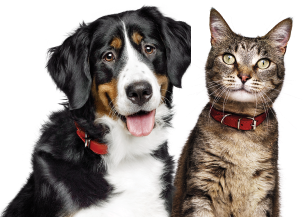The English cocker spaniel has kept strong hunting instincts; this dog likes few things better in life than to go out in search of birds. Yet that pleasure is closely rivaled by the pleasure the dog derives from being close to family members. This is a breed that likes to be part of every family activity. He is cheerful, biddable, loyal, sensitive and playful; in short, a perfect companion for a considerate child or an adventurous adult.
This is a friendly dog, whether to other dogs and pets, children, strangers, and even burglars. The English cocker spaniel is a pretty good watchdog, but a poor choice for a protection dog.
The English cocker spaniel was bred to hunt all day long, searching for, flushing, and retrieving upland game birds. This kind of energy cannot be burned off in a walk around the block. These dogs need a lot of exercise, but fortunately they can satisfy their needs with a couple of good exercise periods a day. Ready access to a fenced yard is a definite help.
The English cocker spaniel's coat must be brushed two or three times a week. For best appearances, the coat should be clipped or scissored around the face, ears, tail and feet every couple of months.
Ears need special attention, as they are somewhat prone to problems if they are allowed to remain moist inside. When the dog is eating, the ears should be held back with a head stocking (called a snood) to prevent food from getting stuck in the feathered tips.
Diet Suggestions:
Puppy: Hill's Science Diet Puppy Dry Dog Food.
Adult: Hill's Science Diet Adult Dry Dog Food.
Mature: Hill's Science Diet Senior Adult 7+ Dry Dog Food.
The spaniel family of dogs is among the first groups of dogs created to aid in the capture of birds. As such, it is a large group with many breeds specialising in hunting different bird species amidst various terrains.
Those that specialised in land hunting were divided into larger and smaller spaniels, with the smaller spaniels specialised for hunting woodcock. No attempt was made to breed the two sizes separately, and both sizes were routinely present in the same litters. With the advent of dog shows, this presented some difficulties, and in 1892 the two sizes of land spaniels began to be designated as separate breeds, with the smaller size dubbed cocker spaniels.
When the cocker spaniel came to America, many breeders in the United States preferred and bred for a different look than what was traditional in the founding country of England. The two styles diverged until they were split into separate varieties in 1936. This meant they could be interbred but would be shown separately. Since almost nobody elected to interbreed the varieties, they were split into separate breeds in 1946. In America, the American version of the cocker spaniel became the more popular, but in the rest of the world the English cocker spaniel is the more popular.





















